Balinese performance art
Shadow Puppetry “Wayang”
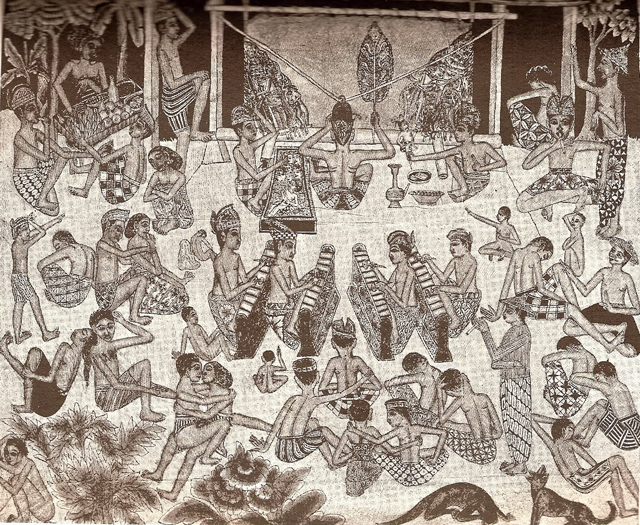
Shadow puppet theater is a thousand-year-old artform that entertains millions to this day in Indonesia & Bali. Cut from buffalo hides, puppets are placed between a tightly hung screen and an electric or fire lamp and usually tell epic Hindu tales like The Ramayana or The Mahabharata. Entire villages gather and watch the all-night tales which are accompanied by live music & narration from behind the screen. Cross legged, giggling on rice mats, entire communities lean-in on the story. Clearly in the depiction above, a pair of lovers are taken over by the romantic poetry of the scene. Just writing about it makes me woozy, err, envious of such a form of entertainment. What a way to learn your context, through night-long puppet theater surrounded by your whole village. Incredible.
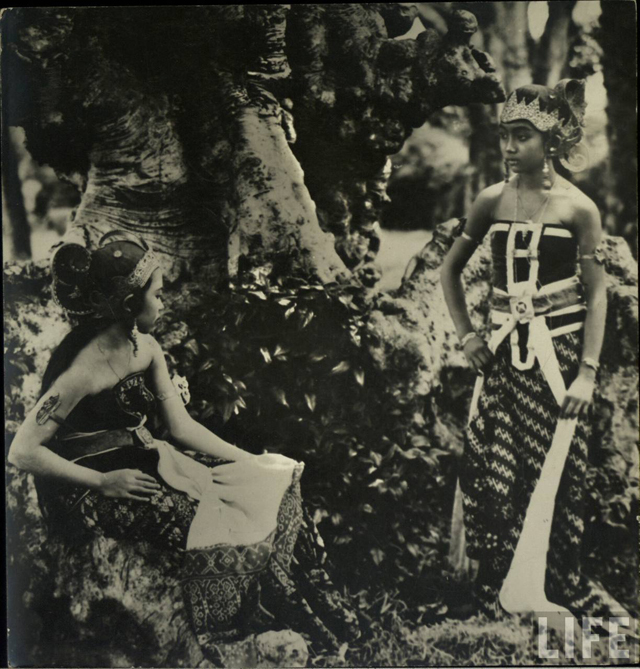
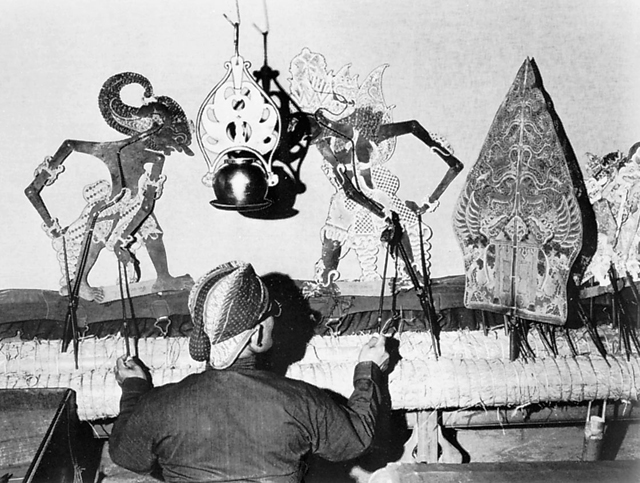
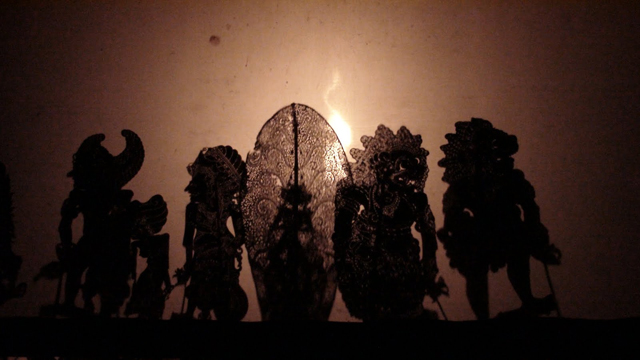
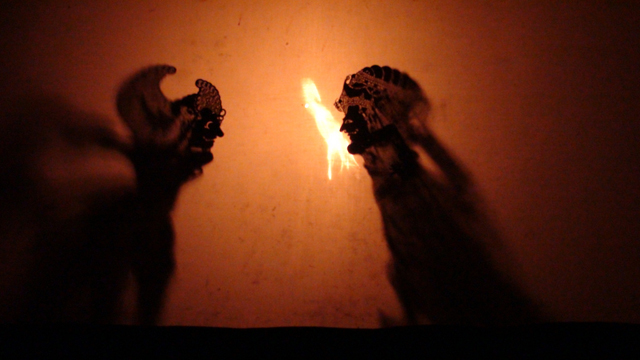
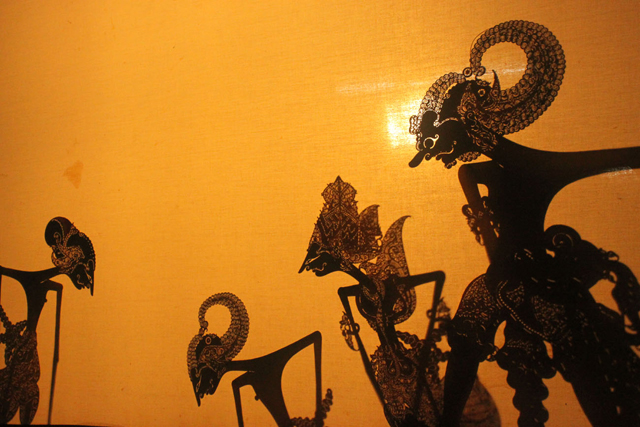
Kecak, Rangda, & the Barong
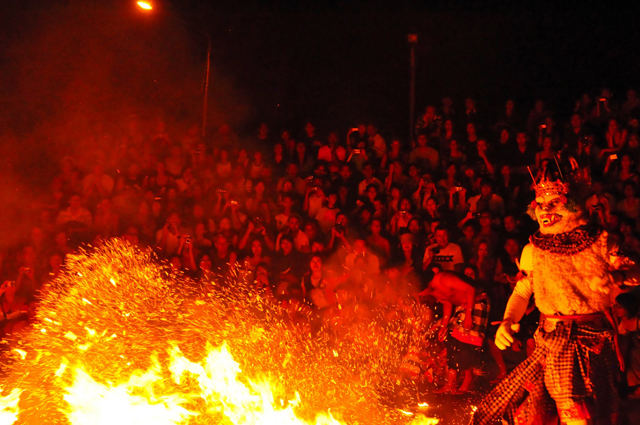
Beyond shadow puppetry, the Balinese offer much more exciting pageantry almost always revolving around the idea of good vs. evil. The result are stories that are never concluded, as the battle rages on in the Balinese mind. There are no victors, no happy endings, just the constant push and tear of light and dark. One such representation is the Kecak “Monkey Dance” unique as it has no instruments, just a large group of men singing a haunting chorus late into the night. It must be bone chilling to experience. The Ramayana is recited, lead by a monk, and most participants usually end up in a trance during and after the performance.
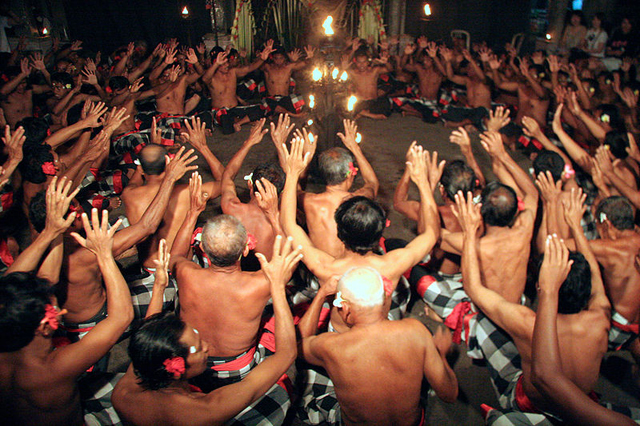
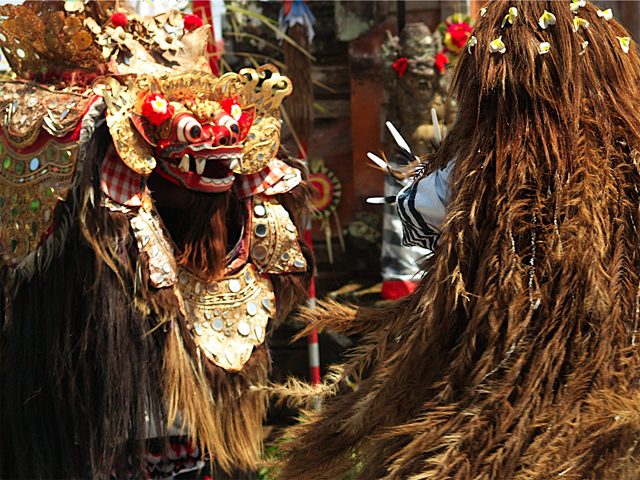
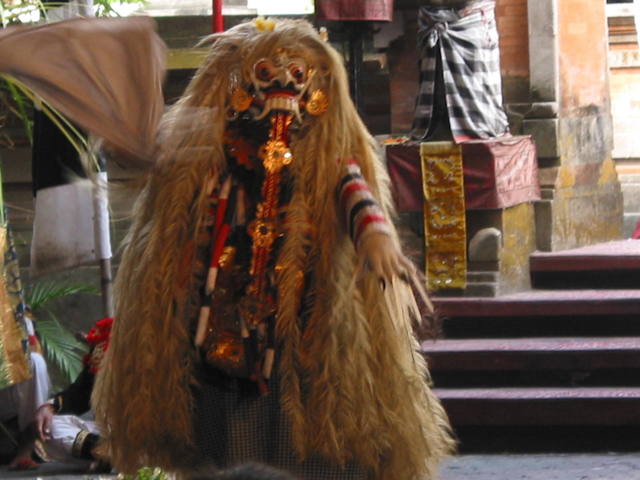
Above, the struggle between the Barong and the witch Rangda, performed every 6 months to rid villages of evil. The wooden masks that are worn are completely artisan works of high art, and each carries its own spirit that must be invoked before being worn. Typically, the performer loses consciousness during these performances and wakes after trance has lifted once the mask has come off.
Here is the Kecak performed for Baraka (1992):
What follows is the struggle between the Rangda and the Barong, both mythical creatures. Rangda uses her evil trance to get the villagers to turn their daggars on themselves, but the Barong prevents the daggars from piercing their skin (called the Kris dance). Quite often this also is done in trance and the villagers will place the Kris’ in their mouth, up their nose, or in their eyes or chest and remain unharmed.
Like I needed more reasons to go to Bali, everyone seems to be an artist or a performer: